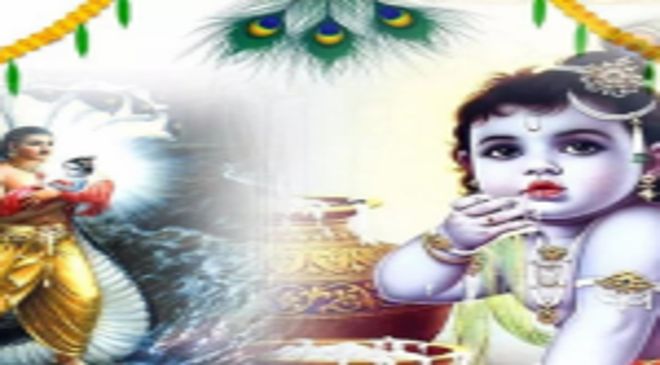One of the popular rituals of Krishna Janmashtami is Dahi Handi. The event reenacts the playful and mischievous childhood antics of Lord Krishna.
Janmashtami is a significant Hindu festival celebrating the birth of Lord Krishna, an incarnation of the god Vishnu. Observed on the eighth day (Ashtami) of the dark fortnight of the month of Bhadrapada (August or September), this festival is marked by a range of religious and cultural activities. Devotees fast and engage in prayer rituals at temples and homes, adorning these places with flowers, lights, and images of Lord Krishna.
Read More:- Tips For Managing Oily Skin This Monsoon Season
This year Janmashtami is being celebrated today on August 26. The Ashtami Tithi begins at 03:39 AM on August 26, 2024, and ends at 02:19 AM on August 27, 2024.
One of the popular rituals of Lord Krishna Janmashtami is Dahi Handi. The event reenacts the playful and mischievous childhood antics of Lord Krishna, who was known for his love of butter and curd (dahi).
Dahi Handi Significance
Dahi Handi holds significant cultural and religious importance, deeply rooted in the life and legends of Lord Krishna. This festive event is primarily a reenactment of Lord Krishna’s mischievous childhood, where he would steal butter and curd from pots hung high in the homes of villagers.
The tradition of forming human pyramids to break the pot during Dahi Handi symbolises Lord Krishna’s playful nature and his deep connection with the common people. It serves as a reminder of the joy and innocence of childhood, celebrated in the context of devotion to the divine.
Dahi Handi is a powerful symbol of teamwork and unity. The formation of human pyramids requires careful coordination, trust, and collective effort, reflecting the importance of working together to achieve a common goal.
Read More: Somvati Amavasya 2024: Know Date, Time, Shubh Muhurat And Significance
What Goes into the Dahi Handi?
The Dahi Handi is traditionally filled with a variety of items that symbolise abundance and the playful nature of Lord Krishna.
- The most important ingredient, curd , represents the main element associated with Lord Krishna’s childhood, as he was known for his love of dairy products, particularly curd and butter. Sometimes, the handi (pot) contains butter, which is another favourite of Lord Krishna and closely linked to his childhood exploits.
- Ghee, or clarified butter, is sometimes added to the handi as well. Ghee is a symbol of purity and prosperity in Indian culture, and its inclusion in the pot adds a layer of spiritual significance to the event. Ghee’s association with sacred rituals and its role in traditional Indian cuisine make it a fitting offering in this celebration of divine playfulness.
- Fruits, particularly bananas and coconut pieces, are also commonly placed in the Dahi Handi. These fruits symbolise nourishment and the bounty of nature, reflecting the festival’s themes of abundance and generosity. They add a vibrant, natural element to the pot, making the contents both nourishing and symbolic of the Earth’s gifts.
- In many Dahi Handi celebrations, money is placed inside the pot as well. This money serves as a prize for the team that successfully breaks the handi, adding an element of competition and excitement to the event. The inclusion of money reflects the celebratory and communal aspects of the festival, where participants are rewarded for their teamwork and effort.
- Finally, traditional Indian sweets such as peda or laddoos may be included in the handi. These sweets represent the sweetness of life and the joy of the festival. Their presence in the pot underscores the festive spirit of Janmashtami, celebrating the happiness and prosperity associated with Lord Krishna’s birth.





































